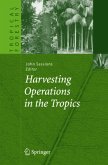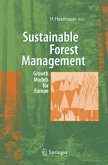The large-scale application of new silvicultural systems has become a political reality in many parts of the world. This involves a gradual transformation of traditional silvicultural practice towards Continuous Cover Forestry, also known as near-natural forest management, favouring mixed uneven-aged stands, site-adapted tree species and selective harvesting. Selective harvesting systems have a long tradition. Specific CCF-related resource assessment, forecasting and sustainable harvest control techniques have been developed, but details about their use are not widely known. The objective of this volume is to present state-of-the-art research results and techniques relating to CCF management with an emphasis on systems engineering and modelling. Using a very simple classification based on the development of timber volume over age or time we may distinguish two types of sustainable forest management systems. Rotation forest management (RFM) systems, characterized by standard silvicultural treatments and repetitive cycles of clearfelling followed by planting; and continuous cover forestry (CCF) systems which are characterized by selective harvesting and natural regeneration, resulting in uneven-aged structures and frequently also in multi-species forests. The distinction is usually the result of decisions relating to the cost of timber harvesting, simplicity of management, or various intangible benefits. The oldest and most perfect examples of CCF systems are the so called plenter selection forests found in France, Switzerland, Slowenia and Germany. Today, CCF systems are encountered in various regions of Europe, North America and in some tropical and sub-tropical forests of South Africa, Asia and South America.








